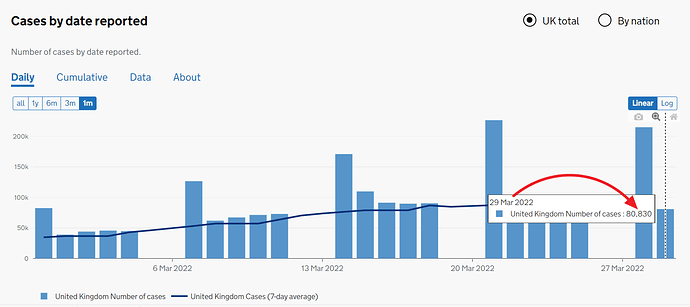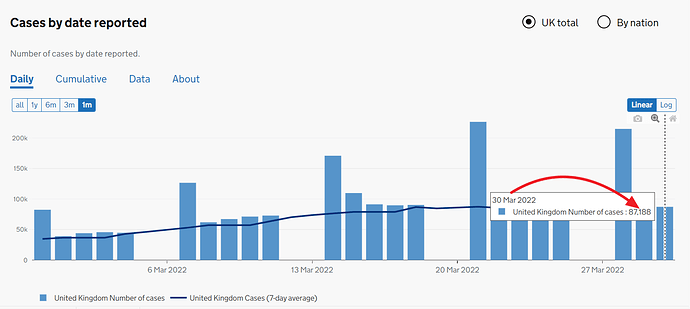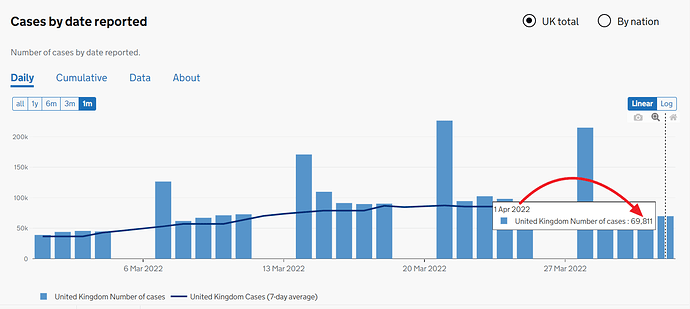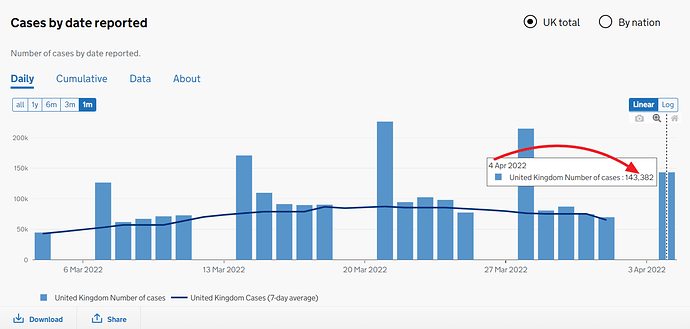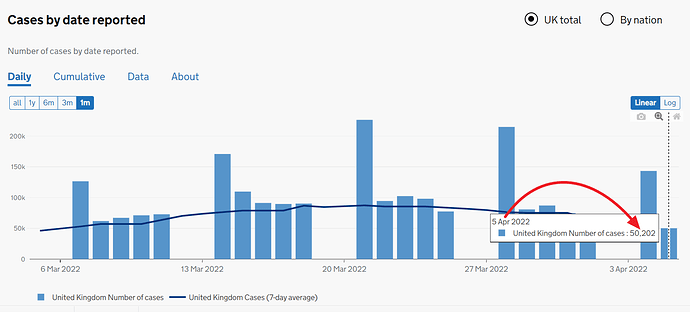Good work from the military … ![]()
@Omah , I know this is more of a public information thread than a discussion one but one thing in struggling to get my head around is how it is possible for such a high proportion of the population to be infected month in, month out.
One would have thought that since there are only 100% of the population available and that lower reinfection rates and vaccine immunity would mitigate matters somewhat. How is it thus possible for 6% of the population to still be infected some 24 months into the cycle?
I can’t answer that question but I would guess that multiple reinfections have a bearing:
Anecdotal reports of Covid reinfection in the UK are growing, including people testing positive just weeks apart in December and January, or having had the virus three or even four times. Children are also being seen with reinfections. We take a look at the science behind catching Covid multiple times.
That would have a bearing on the situation. Suppose it potentially reinforces the need for repeated vaccination booster per annum for the foreseeable future anyway so as to suppress death rates, as well as social/economic disruption, plus of course increasing the NHS capacity to deal with “normal” waiting lists etc.
Anyway, as said don’t really want to disrupt this thread and lead it into the usual covid debates. Back to topic…
Any discussion re current UK status is OK by me.
Areas of specific interest, e.g. world situation, vaccination, long covid, PPE contracts, etc, IMO, deserve their own threads.
That’s good news @Omah - the irony is that over the last week I’ve heard of more people in my neighbourhood having Covid at the moment than at any other time during the pandemic! People letting down their guard I expect.
Will be interesting to see if the recent clement weather has had any effect.
How is the new version of Omicron different?
This new “Spring” Omicron - known as BA.2 - has driven UK infections back up to record levels.
The Office for National Statistics said that around one in 16 people across the UK had Covid in the week ending 19 March.
It is similar to - but even more infectious than - the version that came before, “Christmas” Omicron (BA.1).
If you’ve had Covid in the past few months, it’s likely to have been a version of Omicron, which in turn should give you good protection against a second bout of it.
The data we have so far suggest that a second Omicron infection is “rare, but can occur”. More reinfections have been seen among younger people and those who haven’t been vaccinated.
About one in every 13 people in the UK has coronavirus, according to latest estimates from the Office for National Statistics (ONS).
That is some 4.9 million people, up from 4.3 million people the week before.
ONS officials say that is the highest number seen since its survey began at the end of April 2020.
The surge in infections is being driven partly by the contagious Omicron BA.2 sub-variant and people mixing more.
The figures for the week ending 26 March are thought to give the most accurate reflection of what’s happening with the virus in the community.
Under the new rules, the infected, in general, do not have to take a test or report the result of a test and may mix freely amongst the population. Presumably, by Christmas, we’ll all have had COVID at least once and most of us will have lived to tell the tale.
A decrease over last weekend … due mainly to the reduction in testing procdures … 
I was advised today that (up here anyway), all testing & vaccination sites are being wound up to close now. So nobody can get a PCR, and nobody can be vaccinated shortly (although perhaps vaccinations can still be administered by health people…nurses etc.)
Yes … that’s the way it’s going:
Friday marked the dismantling of almost the entire testing infrastructure. The rest of the UK will follow later in the spring and summer.
Gone are the local testing centres, set up in car parks, community halls and shopping centres. At one point there were more than 800.
Gone are the free lateral flow tests people could order online or pick up from pharmacies and High Street locations.
Instead, only a strictly defined group will be entitled to free tests - and in most cases, only then if they have symptoms.
It includes:
- 1.3 million people with weakened immune systems, so they can be given drugs to reduce the risk of serious illness developing
- hospital patients to diagnose their condition and tailor their treatment
- health and care staff to reduce the risk of them spreading it to vulnerable people
The rest of us will have to pay for them - with prices starting at £2 per test.
The guidance now asks people to try to stay home and avoid contact with others if they have symptoms, including a high temperature.
Despite a massive number of estimated cases:
AFAIK, vaccinations are due to continue but second “boosters” are being rolled out on a restricted basis:
Now, a second booster - to be administered six months after the previous dose, or sooner if deemed appropriate - will be offered to:
- adults aged 75 years and over
- residents in a care home for older adults
- individuals aged 12 years and over who are immunosuppressed, or have weakened immune systems
Other age groups may qualify in the autumn.
gov.uk/details/cases?areaType=overview&areaName=United%20Kingdom)
Unbelievable fall … 
With (allegedly) record levels of infection last week, this fall is not credible - it must be entirely due to lower testing numbers.
Not sure. Trend does tie in with the decline of numbers of pupils absent from schools though.




